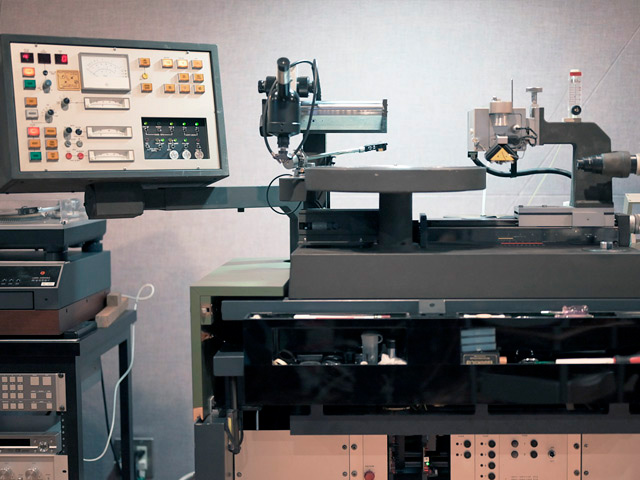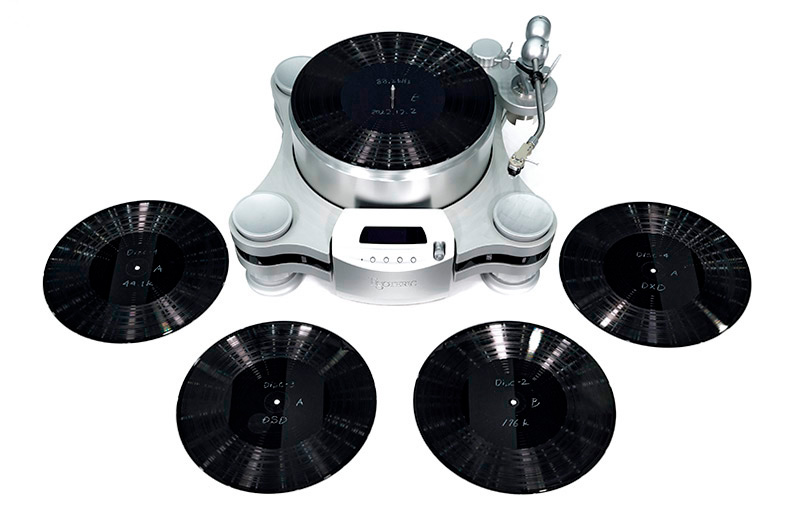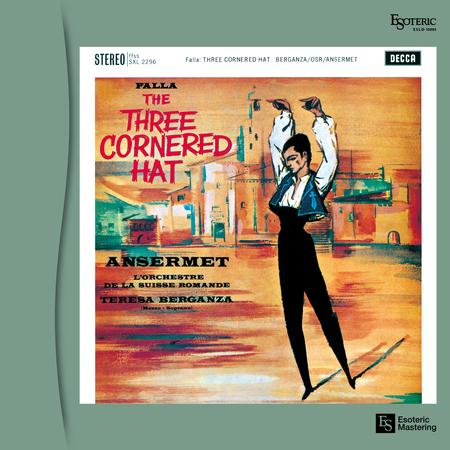A Digital Dance from Esoteric Japan
Reviewing another take on a longstanding orchestral war horse
There’s a certain romance about audio and vinyl from Japan. For equipment there is a well-deserved reverence for the build quality and commitment to excellence from the engineers, and for vinyl records we’ve long been fascinated by boutique audiophile pressings from the island nation, particularly I’ve long held a steadfast love for King Records’ “Super Analogue Series” of Decca classical reissues.
Classical vinyl reissues from Japan have unfortunately dried up over the years as the classical audiophiles there have turned to CDs and notably SACDs more and more. One company producing high end classical remastering’s on SACD in the last few decades has been Esoteric. The Tokyo-based company, founded in 1987, has made a name for itself not only producing high end digital consumer audio equipment, but also releasing their own line of SACDs remastered on their own flagship equipment. For repertoire, Esoteric always picked the crème of the crop, well-known audiophile gems from the golden age of classical recording, reissuing many titles from Decca, EMI, Philips, and Deutsche Grammophon.
I’ve collected many Esoteric SACDs over the years, they intrigued me with their unique jackets, well-detailed mastering chain, and of course their highly limited nature on this side of the pacific, selling out very quickly and commanding large sums on the secondary market. In total I have about 13 releases from the company on SACD, and with each of them I’ve been highly impressed, particularly on recordings of which there was room for improvement such as Decca’s early digital recordings of the 1980s which never sounded quite right to my ears.
The company experimented with a few vinyl reissues before, back in 2009 and cut by Tohru Kotetsu, but little has been written about those releases and I’ve yet to hear one. But last year, Esoteric decided to relaunch their vinyl series, now called the “Masterpiece Collection” with a set of some of their “greatest hits.” These included Decca favorites like Anatole Fistoli’s well regarded Swan Lake reading, as well as Kertesz’ famous New World Symphony, and Karajan’s Dvorak 8. Also, David Oistrakh’s rendition of the Brahms Violin Concerto with Szell and Cleveland from the EMI catalog, and then of course the two recordings I will be examining in this review. But before I spill the beans, let’s talk about what makes these records unique in the pantheon of classical vinyl reissues.
Esoteric have assembled the mastering chain for this new series in-house, while cutting is handled by Katsuhoshi Kitamura at Mixer’s Lab. Esoteric claim the “original master tapes” are the sources for these new reissues, however it’s unclear if that implies new scans of the tapes for these cuttings, or if they are using the same scans used for their earlier SACD release, also more clarification about how these scans were obtained and what on format or bitrate would be helpful. However Esoteric are very upfront about these being digital remasterings, and the English-language promotional materials go to great lengths to describe their equipment and process.
These albums are remastered on the “Esoteric Mastering” chain. This includes much of the company’s own equipment such as the Master Sound Discrete DAC, and Master Sound Discrete Clock. Esoteric actually hauled their own equipment over to Mixer’s lab to run it directly to the studio’s Neumann SP79C cutting console, bypassing the console’s equalizer. The signal is then sent to a VMS80 cutting lathe, of which apparently only two exist in Japan, mounted with an SX74 cutting head.

Esoteric claim that they would make numerous lacquer cuts of the same LP to take back to the studio and listen on their reference system consisting of their Grandioso T1 turntable and Grandioso C1X preamplifier. This would be a relatively unique methodology and it’s unclear to me if the Esoteric team are then plating lacquers that have been played on a turntable, or if they are then cutting new lacquers based on their listening notes. Either way, a bit different than the normal route of sending off test pressings. The company does not directly state where these records are pressed, but judging by the inner sleeve they arrived in and the fact that everything on the product states “made in Japan”, I would guess Sony’s new plant is the culprit. That’s good news because they have been producing some of the highest quality pressings out there, giving RTI and QRP a run for their money.

I purchased and listened in depth to two of these “Masterpiece Collection” reissues for this review, both legendary recordings in their own right and both recorded in 1960: Ernest Ansermet’s Decca recording of the ballet Three Cornered Hat by Spanish composer Manuel de Falla, and longtime Leningrad Philharmonic conductor Yevgeny Mravinsky’s tour de force recording of Tchaikovsky’s Symphony No. 5 in E minor on Deutsche Grammophon. The first is a well-known favorite of audiophiles for its prime Decca tube sonics, the other was never considered a sonic marvel but a ferocious and historic performance that put Russian orchestras on the proverbial map. I will get to the Tchaikovsky in an upcoming review, but for now the Falla takes center stage.
There have been a lot of notable pressings of this recording over the years. The original wide-band Decca/London pressings command high dollar, with NM copies of the London original alone reaching $200 on todays market. Alas I do not own this pressing, nor do I own the 1997 Speakers Corner. What I do have though is no slouch; the 2011 Original Recordings Group 45rpm edition. This was cut by Bernie Grundman from the original master tapes and pressed at RTI. It’s a pressing that has been hailed repeatedly including by our host Michael Fremer. If the new Esoteric digital cut was going to be tested, this pressing would provide a trail by fire.
The piece on show here is a ballet in name only, Three Cornered Hat was commissioned by Sergei Diaghilev and the Ballet Russes (the ballet company best known for premiering the infamous Rite of Spring) after being introduced by the one and only Igor Stravinsky. Falla has the distinction of being Spain’s most famous composer both at the time, and today in the modern age. Falla composed a work that is much less a ballet than a traditional Spanish dance transposed through the lens of a ballet structure. The opening introduction includes percussive effects from the dancers such as stomping, clapping, and shouting. The musical acts are interspersed with “Cante Jondo” by soprano Teresa Berganza, a traditional vocal prelude in Spanish flamenco music. All of this will come across as very unusual for listeners expecting “ballet music”, but not at all surprising if you go in expecting flamenco set to symphony orchestra. All these effects as well as the dynamic swings that occur naturally in this music create the perfect conditions for a hi-fi showstopper and that’s just what the Decca engineers at Victoria Hall in Geneva (not the first venue you’d think of for flamenco music) were able to capture.
.jpg)
The Esoteric pressing is flat and dead quiet. On my first listen I was struck by the clarity of the human “instruments” in the introduction, the diction of the shouted passages, and the transient attacks of the clapping “dancers” (it’s a recording session after all). The more I listened I was impressed with a number of things, the upper harmonics of the woodwinds and brass that had a very pleasing and sunny extension, as well as a good amount of instrumental separation. Things like the English Horn solo cadenza in the “Miller’s Dance” (an excerpt I have played on nearly every English Horn audition for over 10 years) spot lit the reedy exuberance of the instrument. Let’s be clear, this is a very good recording and any version of it that you listen to is going to be a joy. But there was something nagging at me and that was that I recalled much more impact and particularly more bass on this album than I was getting listening to this new pressing.
Switching over to the ORG confirmed my suspicion. On the one hand: yes, a 45rpm record does have some natural advantages, but what I was hearing was far more than the format advantages. Bernie Grundman’s cut reminded me of everything I loved about this vintage Decca outing. The soundstage here was HUGE and impressed upon me the dynamic scale a symphony orchestra could impose on the listener. There was also so much resonance from the lower strings that was missing from the Esoteric.
Playing these two versions further in a more back-to-back setting further exacerbated the differences: The Esoteric version isn’t bad by any means, and the upper frequency extension is actually more clear and more well-defined than the ORG, but that’s about the only place it excels by comparison. Otherwise, it presents a very dry and somewhat anemic perspective with a subdued bass. Lower bass is actually nice, but the “meat” of the mid-bass is missing and makes the orchestra sound small in doing so. The soundstage is also far narrower than the expansive wide and deep presentation Bernie was able to extract out of the tapes.
This might be analog confirmation bias, but in every measure, the Esoteric does sound more digital. It is quiet, with excellent detail and clarity, but lacking in color, expansiveness, and most of all dynamics. The big character shifts that are inherent in this work are lessened. They should explode out of the speakers rather than merely project. The Esoteric sounds very “studio control booth”, the ORG sounds like you are at the front row of Geneva Hall.
Does this mean that the new Esoteric pressing would lose out to all the other AAA versions of this record? I have no way to tell. I don’t particularly want to pony up $200 for an original pressing just to do a shootout, but now I do have an inclination to want to try the much more affordable Speakers Corner 33rpm pressing to see if it can capture some of the magic clearly present on the ORG 45.
Pricing for these Japanese records is very much country dependent, but here in the states these bad boys are $100 for a single LP 33rpm album. Is that cheaper than what the ORG pressing is now going for 13 years later? Yes. Is it a good value for the buyer considering the MSRP of most new AAA 33rpm recordings out there now? In my humble opinion, No.













































.png)








